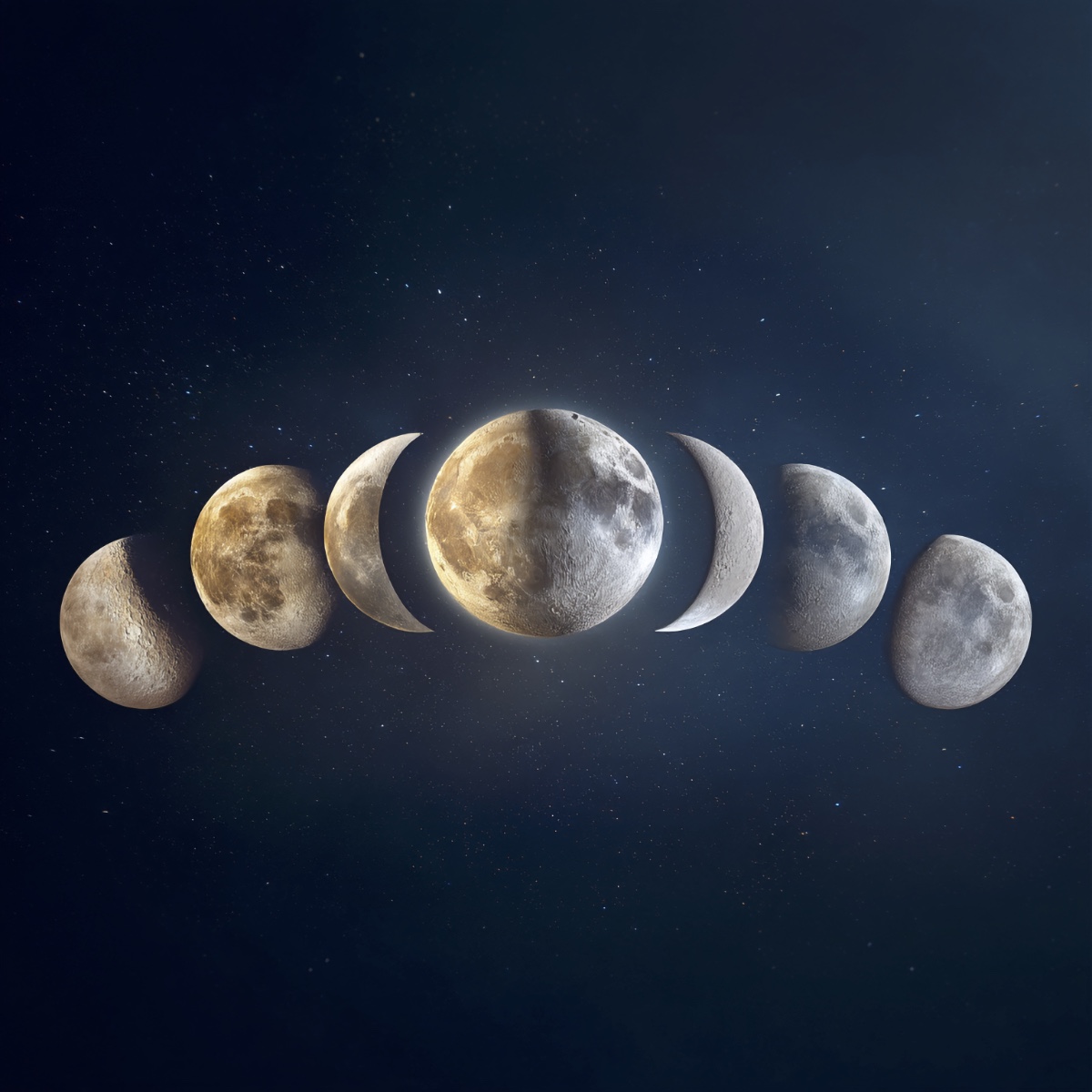Moon Phase Calculator
Upcoming Major Phases
Calculate lunar phases for any date and time. This tool shows the current moon phase, illumination percentage, and helps plan astronomical observations and photography around lunar cycles.
How to Use the Moon Phase Calculator
- Select a date or click "Show Current Phase" for today.
- Optionally specify a time and timezone.
- See the lunar phase, illumination percentage, and visual representation.
- View upcoming major phases for planning purposes.
Moon Phase Types
| Phase | Illumination | Best For |
|---|---|---|
| 🌑 New Moon | 0% | Deep-sky photography, faint objects |
| 🌒 Waxing Crescent | 1-49% | Young crescent observation |
| 🌓 First Quarter | 50% | Lunar features along terminator |
| 🌔 Waxing Gibbous | 51-99% | Mare and crater detail |
| 🌕 Full Moon | 100% | Overall lunar photography |
| 🌖 Waning Gibbous | 99-51% | Late evening observations |
| 🌗 Last Quarter | 50% | Morning terminator features |
| 🌘 Waning Crescent | 49-1% | Old crescent hunting |
Understanding Lunar Phases
What Causes Moon Phases?
Moon phases result from the changing angles between the Sun, Earth, and Moon as the Moon orbits Earth. We see different portions of the Moon's sunlit hemisphere throughout the 29.53-day lunar cycle.
Observation Planning
- New Moon: Ideal for deep-sky photography and observation of faint objects
- Crescent Phases: Great for photographing the thin lunar crescent
- Quarter Phases: Best for observing lunar surface features along the terminator
- Full Moon: Excellent for overall lunar photography but interferes with deep-sky work
Astronomical Applications
- Astrophotography: Plan shooting schedules around moon brightness
- Visual Astronomy: Choose optimal times for different types of observations
- Lunar Photography: Capture different phases and features
- Navigation: Historical and survival navigation techniques

FAQ
-
How long is a lunar cycle?
A complete lunar cycle (from new moon to new moon) takes approximately 29.53 days, called a synodic month.
-
What's the difference between a new moon and full moon?
During a new moon, the Moon is between Earth and Sun (dark side faces us). During a full moon, Earth is between the Moon and Sun (bright side faces us).
-
Why do moon phases occur?
Moon phases occur because we see different amounts of the Moon's sunlit side as it orbits Earth, changing its apparent shape.
-
How accurate is this calculator?
The calculator uses astronomical algorithms and is accurate to within minutes for moon phase timing and percentages.